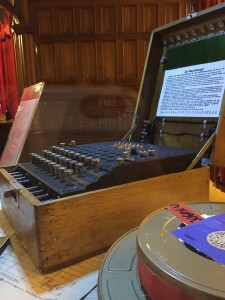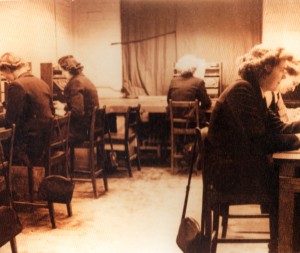
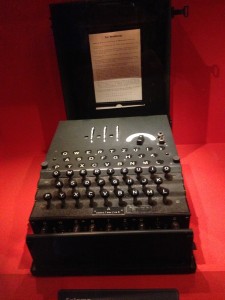 The sine qua non of the war effort at Bletchley Park was the need to break the German Enigma machine. The Enigma was basically a mechanical cipher machine that was used by every German military (and some civilian) sectors to transmit messages about troop movements, bombings, battle plans, Uboats, and other German war tactics. The Germans were confident it could not be cracked, and they had good reason to be. The Enigma was a complex machine.
The sine qua non of the war effort at Bletchley Park was the need to break the German Enigma machine. The Enigma was basically a mechanical cipher machine that was used by every German military (and some civilian) sectors to transmit messages about troop movements, bombings, battle plans, Uboats, and other German war tactics. The Germans were confident it could not be cracked, and they had good reason to be. The Enigma was a complex machine.
Each key on the what looks like a normal typewriter was a trigger for second enciphered letter. So when A German pressed the letter “r”, for example, a different letter—the enciphered letter— would light up, say an “e.” To decipher the message the recipient would depress the “e”, and the “real” letter, the “r” would lights up . Of course, both the sender and recipient had to have the same settings on their Enigmas.
But that’s at its most basic level. The Germans changed “selections” or enciphering keys every 24 hours, which meant that even if the Brits deciphered the code one day, the algorithm (or deciphering key) would be totally different the next. And the system was based on machinery, rotors, and wiring that could scramble the message even more. Essentially, the Enigma could spit out potentially 150 million million different configurations of the ciphers.
Bletchley Park c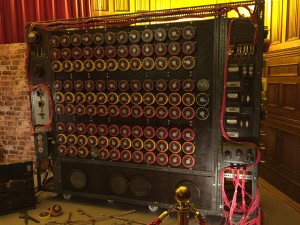 odebreakers, led by Alan Turing and Gordon Welchman, went to work using a variety of different techniques to tackle the problem. All the techniques involved math at a high level and are way over my pay grade, so I won’t even try to explain them. Eventually, though, the codebreakers built what they called “The Bombe,” inspired by the work of Polish engineers years before. In essence, the Bombe was the first computer ever invented, and it allowed the British to crack the Enigma settings.
odebreakers, led by Alan Turing and Gordon Welchman, went to work using a variety of different techniques to tackle the problem. All the techniques involved math at a high level and are way over my pay grade, so I won’t even try to explain them. Eventually, though, the codebreakers built what they called “The Bombe,” inspired by the work of Polish engineers years before. In essence, the Bombe was the first computer ever invented, and it allowed the British to crack the Enigma settings.
But it wasn’t perfect, so another machine, called a Checking Machine,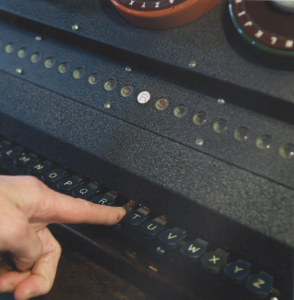 which was basically an ersatz Enigma, was built as well. That provided the “finishing touches” and allowed the British to fully decipher Enigma’s messages.
which was basically an ersatz Enigma, was built as well. That provided the “finishing touches” and allowed the British to fully decipher Enigma’s messages.
By 1941, Bletchley Park had begun to decode German messages and that capability soared in the following years. In fact, over 200 Bombes were built, many housed at Bletchley, but some were in other locations as well.
The intelligence received from all these was called Ultra. Winston Churchill told King George that Ultra and the Bombe had shortened the War by at least two years.
What fascinates me is that Ultra was given only to a few top commanders, and they were forbidden to act on it until the Allies were sure the Germans had been deceived into thinking the information came from other sources than the Enigma. Secrecy was so crucial that information was shared on a need to know basis only. Few people knew the whole story of the Bombe, or even which other sections existed besides their own. But it worked, and there were no leaks, something that seems impossible today. In fact, Churchill called Bletchley and Ultra “the geese that laid the golden eggs and never cackled.”
Next time: The Movie
